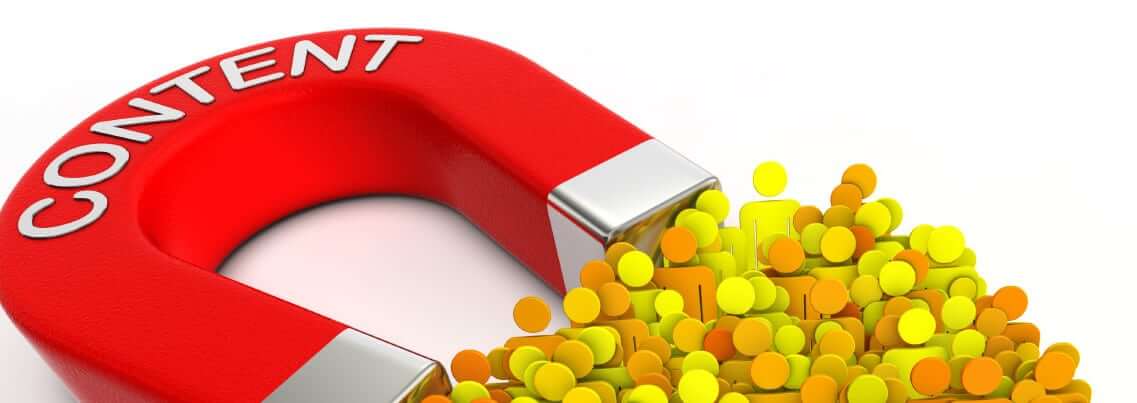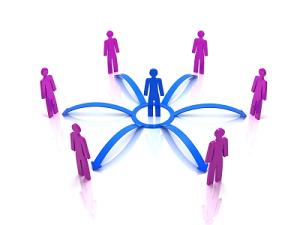Marketers everywhere are scrambling to develop content and leverage the myriad of channels as a way to reach and connect with prospects and customers.
Here’s the kicker, if we focus on producing content without taking the customer buying process into consideration our efforts may be for naught. Content delivered in the right channel at the wrong time can be a wasted touch point. This article outlines how to synchronize mix and content with the customer buying journey and lifecycle, and why this is important.
It’s often been said that today’s customers are in the driver’s seat when it comes to selecting a supplier. Certainly customers have more choices, more control, and more ways to connect and access information. As a result, marketers need a new way to attract and retain customers. Enter content marketing. Content marketing aims to create and curate relevant and valuable content that will change, enhance, and drive customer behavior. The basic idea of content marketing is to deliver information that makes your buyer more intelligent. As a result marketers everywhere are scrambling to develop content and leverage the myriad of channels as a way to reach and connect with prospects and customers.
Here’s the kicker, if we focus on producing content without taking the customer buying process into consideration our efforts may be for naught. Content delivered in the right channel at the wrong time can be a wasted touch point. Content marketing is not the same as running a campaign. Content marketing looks more like publishing, where you serve as the architect of useful and compelling information that will inform, educate, engage and entertain customers and prospects. Content marketing is part of the marketing mix, not a substitute for it.
An essential part of the equation is to match marketing content with the customer buying journey and lifecycle. Too few marketers have mapped their customer’s buying journey, moved from profiles to personas, and clearly understand their customer’s lifecycle. Because it is more cost effective and profitable to keep a customer than to acquire one, then it is important to know both the buying journey as well as the customer lifecycle.
Start with the Customer Lifecycle and Buying Journey
One common definition of customer life cycle is “the progression of steps a customer goes through when considering, purchasing, using, and maintaining loyalty to a product or service.” The key point is to recognize that the lifecycle defines an ongoing relationship and continuous dialogue.
Forrester defines the customer life cycle as, “The customers’ relationship with a brand as they continue to discover new options, explore their needs, make purchases, and engage with the product experience and their peers.” In our company, we advocate that there are Six C’s associated with this process:
• Contact
• Connection
• Conversation
• Consideration
• Consumption
• Community
Whether you use this concept or another, the premise of the customer lifecycle is the same: capture potential and existing customers’ attention, preference, purchase, and loyalty.
As marketers, we can and must understand the customer buying journey and use the customer lifecycle as the basis for every marketing investment decision we make that is designed to acquire, retain, upsell, cross-sell, and create customer advocates. If you serve more than one market or region, and your product requires a consultative approach, it’s very likely that you will have multiple customers and will therefore need to map multiple buying journeys and lifecycles.
Only by understanding the customer the buying process and lifecycle, can marketers make better decisions about the additional marketing investments of time, people, and cash on existing customer-targeted efforts. Armed with this foundation, you can develop content that delivers high quality, relevant and valuable information to prospects and customers in the right channel at the right time to drive profitable customer action.
How can we record this process when most customer buying journeys and lifecycles are not linear. While it is impossible to completely capture and monitor the entire buying journey and decision; mapping this process helps you capture their channel preferences and interactions. You may not be able to know exactly which colleague analyst, on and offline channels a customer used, or which publication informed them, but mapping the buying journey and customer lifecycle will give you insight into when and how they are influenced.
Perhaps the following examples will help bring this point home. Let’s say you currently market and sell a technology product to IT buyers and decision makers in the federal government. Your research suggests that there may be a strong growth opportunity in the Emergency 911 system – a quasi-government system. If you didn’t map the customer buying journey, you might assume that the buying process for the Emergency System was the same as for any other government agency. And you might also assume that the profile of the IT buyer at these sites would be the same as the IT buyer at the agency. Only by mapping the buying process would you learn that these are two very different personas and two different buying processes with different marketing content implications. White papers and trade shows may be far more important in the early stages of the agency buying process, while webinars and videos of the system in use are more important in the early stages of the buying process for the emergency services sites.
Map the Journey and Lifecycle
There are different approaches to mapping. Regardless of the approach you take, it is important to include input from all internal people in contact with customers (sales, marketing, customer service,product marketing) as well as the customers themselves. The mapping process should take into account:
• Initial triggers that lead to first contact.
• Steps they take (industry reports, product reports and reviews, white papers, demos, etc.) and the conversations (analysts, colleagues, event encounters, call centers, sales people, etc.) they engage in to solve their problem and find a specific solution.
• Steps and experiences leading up to their purchase (the RFP, reference calls, pilots, etc.).
• Steps associated with the purchase and consumption (the onboarding process, purchasing processes, implementation, invoicing, etc.).
• Ongoing experience and reaction to their purchase (problem resolution process, new product offers, community participation opportunities, etc.).
Once you’ve mapped the process and organized each step into the appropriate stage, you can now begin to synchronize your marketing content with the buying process and lifecycle. Two important benefits of this initiative are improved marketing and sales alignment and a more behaviorally-based opportunity qualification process.
Match Mix, Content, Channel and Lifecycle
The link between marketing activities, content, and the customer buying process, and lifecycle, will become clearer once you complete the mapping process. It will become obvious that different programs and content will be more valuable and appropriate at different stages depending on the customer process. The map will serve as a guideline for improving the utility of your mix, and the content you use to connect and engage with customers and prospects, and to enhance existing customer relationships.
For example, you may learn through the mapping process that, traditional in-person events and presentations are far more valuable at creating contacts and connections for a specific segment that social media and blogs are. Your map may reveal that webinars with industry experts are a viable touch point for consideration for some customer segments while online chats with existing customers and traditional telemarketing are more effective for other segments. Through the process, you may learn that traditional e-newsletters are ideal for staying connected with one set of existing customers and and online community with guest posts is better for another. As a result, marketing will need to select the program and build content that supports the preferred channel for that touch point in the process.
Is it worth the effort? Research by Marketing Sherpa suggests that it does. Their work reveals that buyers prefer content that is targeted to their specific industry, job function and company size. They also found that educational pieces such as sharing best practices, work well during the early stages and industry-oriented pieces work well during solution evaluation stages. So before cranking out more content, step back and validate the buying process, content, channels and mix so you can orchestrate a marketing effort that will engage and motive customers.


